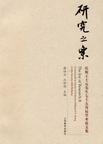研究之乐
2010-4
上海教育出版社
潘悟云,沈钟伟 著
419
无
王士元先生的祝寿文集已经多次出版,各文集的序言中对王士元先生的学问、成就、为人都作了详细介绍和精辟总结。再写一篇序言,难免重复,然而对于大部分读者来说,许多内容需要重复,也值得重复。王士元先生著述丰富,一篇序言难以概括。可以参考的是王士元先生的两本自选论文集,一本是1991年出版的英文文集Explorations inLanguage《语言探索》,另一本是2002年出版的中文文集《王士元语言学论文集》。既然是王士元先生自选的文集,其中的文章应该包括王士元先生学术研究主要兴趣和基本内容。以下就根据这两本文集,对王先生的学术研究做一个大致介绍。 语言学作为一门独立的学科,历史并不算长。早期的杰出学者,像索绪尔、萨丕尔、布龙菲尔德等皆能涉及语言研究各个领域,并有创见。然而语言学研究日渐繁复详密,一人尽一生之力已经难以遍及。因此近代语言学者多以专精出名,或专长语言学的一个领域,或专长某一语言。王士元先生则是例外。他的研究几乎涉及语言学的各个主要领域,如语音学、音系学、句法学、历史语言学、心理语言学、计算语言学、语言历史。他虽然经常取材于汉语,但是他的眼光远远超出汉语。因此他的研究造成的影响总是超出一个领域和一个语言的范围,甚至超出语言学的范围。王士元先生的主要学术见解可以从他所注重的研究来观察。他的语音研究体现了他对于语言本质是有声语言的充分重视,他的语言变化理论则反映了他认为语言是一种发展和进化现象的鲜明观点。 王士元先生的研究贯通语言学的各个领域,而且都是先驱性的。在历史语言学中,王士元先生1969年在美国权威性的《语言》学刊上发表了题为Competing Changes as aCause of Residue“竞争性演变是造成残留的原因”的著名文章,提出了“词汇扩散理论”,向历来在历史语言学中被视为基本定律的“音变无例外”假设提出了根本性的挑战。词汇扩散理论认为在音变的过程中,语音的变化是由一个语音到另一个语音的“突变”现象,词汇上的表现是一个“渐变”的逐渐过程。这和传统的看法,即语音上是一个细微的“渐变”过程,但是在词汇上是一个影响所有词汇的“突变”现象,针锋相对。
王士元先生的祝寿文集已经多次出版,各文集的序言中对王士元先生的学问、成就、为人都作了详细介绍和精辟总结。再写一篇序言,难免重复,然而对于大部分读者来说,许多内容需要重复,也值得重复。王士元先生著述丰富,一篇序言难以概括。可以参考的是王士元先生的两本自选论文集,一本是1991年出版的英文文集Explorations inLanguage《语言探索》,另一本是2002年出版的中文文集《王士元语言学论文集》。既然是王士元先生自选的文集,其中的文章应该包括王士元先生学术研究主要兴趣和基本内容。以下就根据这两本文集,对王先生的学术研究做一个大致介绍。
New Loanword Rimes and Syllables in Hong Kong Cantonese论关系语素完全对应的周遍程度和时空层次分析幽默语言对词语语义的操弄Place and Manner:Affricates in English,German,and Japanese《辨声捷诀》的一种读法P&P or Q&Q?语言的知识与知识的语言:由《说文解字》出发的知识本体研究古藏语音位系统的结构和分布语言接触的两种类型——以桂中地区诸语言述补结构带宾语的语序为例Interrelationship between Language and Music亲缘比较语言学:超级语系建构中的华夏汉语位置台湾共通语的词汇重整“组块”与语言结构难度粤语的形成、发展与粤语和平话的关系Exploring Linguistic Ambiguity from a Simulation Perspective“Protolanguage”and the Evolution of Linguistic Diversity久远年代语言的历史比较探索历史材料所反映的正在发生的音变汉语普通话陈述句语调的停延率Modality and Variation in Sign Langtlages松紧对立的第三种来源:元音变化从交际功能和编码机制的角度理解语言交际压力度(DCP)与混合语形成机制——以倒话为例蔡家话白语关系及词根比较声调四维度
Table 1 below lists the full set of 60 rimes that form the contemporary Hong KongCantonese rime system. Listed in this table are three types of rimes: (1) those thatoccur in syllables that are the standard Cantonese reading pronunciations of standard Chinese characters; (2) rimes that occur only in syllables of the colloquial lexicon; and(3) rimes that occur only in English loanword syllables. In examining this table, readersfamiliar with Cantonese phonology will easily recognize the "traditional" rimes, but alsolisted here fr the first time are a few "new" rimes that the reader may not have encounteredbefore because they only occur in loanwords. One of the purposes of this paper is to identify theorigin of these loanword rimes and justify their inclusion in this table. Table 1 also highlights another interesting point about the Cantonese rime system:as we can see, some rimes occur in colloquial and loanword syllables that are notrepresented by Chinese characters. This is because we cannot find Chinese characters(either standard or dialecta ) that have these rimes in their pronunciations. The problemhere is that the Cantonese syllabary comprises more syllables than there are characterswith suitable pronunciations that could be used to represent the syllables (given the hugenumber of characters in the Chinese language, this may seem hard to believe, but,nonetheless, it is true).As a consequence of this disjunct between syllables andcharacters, some loanwords cannot be written with Chinese characters but retain theiroriginal English spellings which are read with Cantonese pronunciation (Bauer 2008b).

无